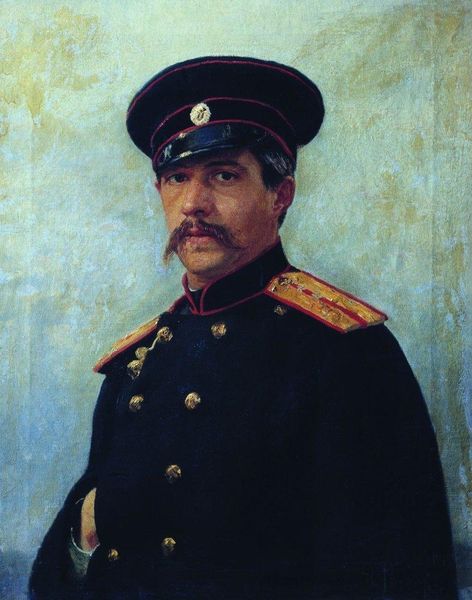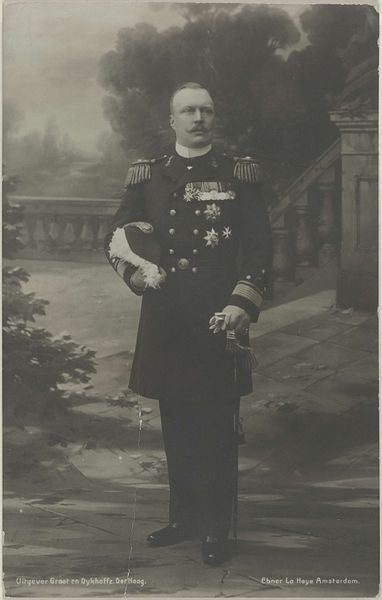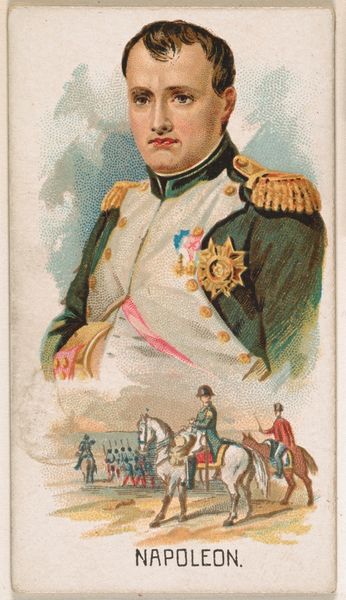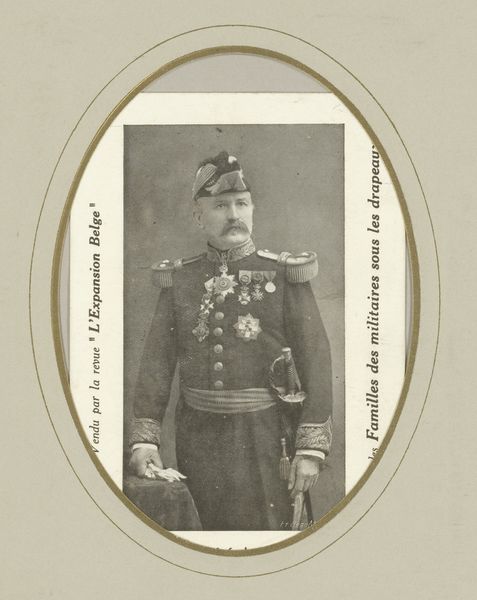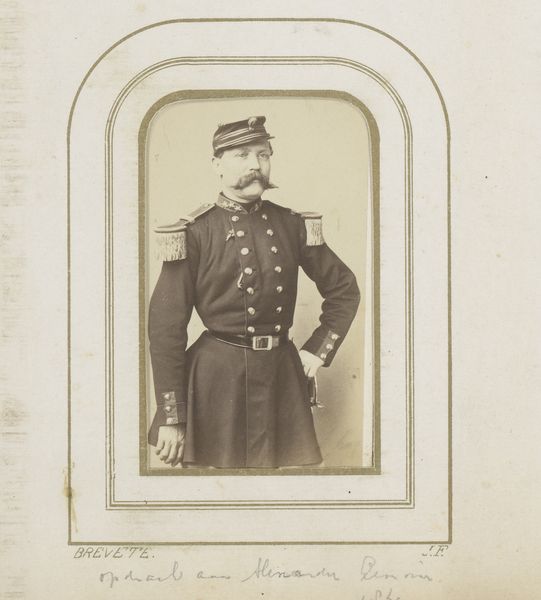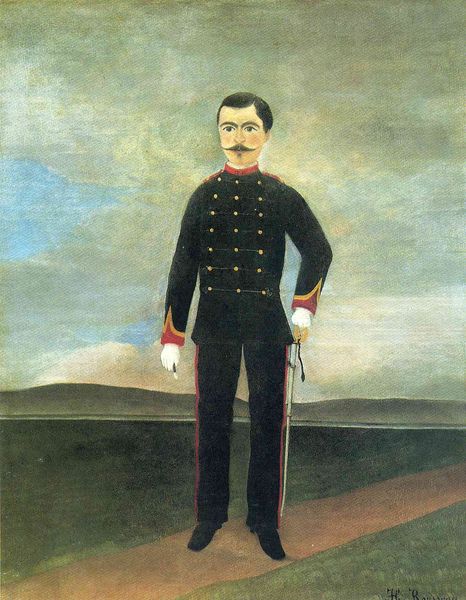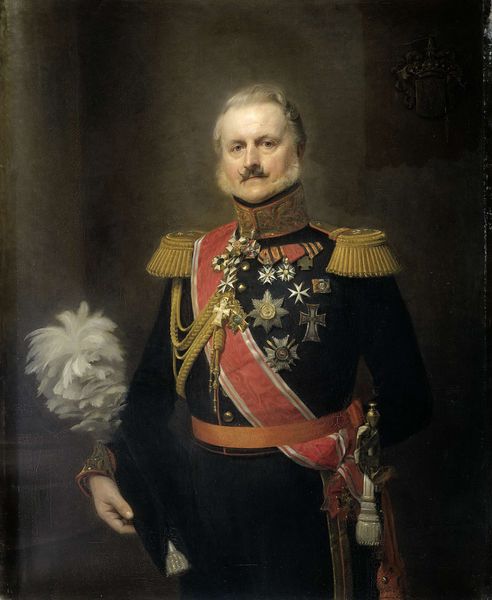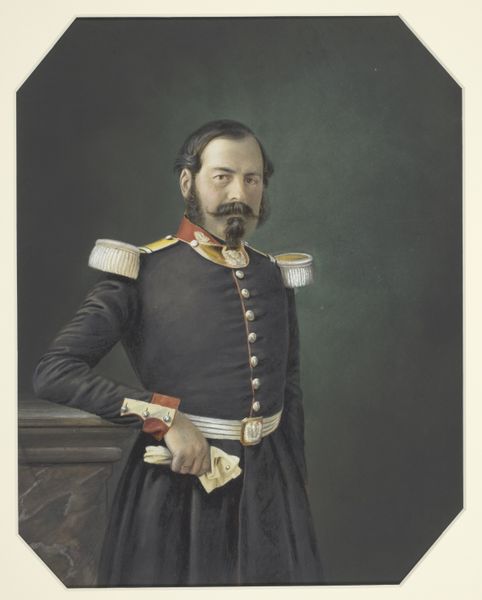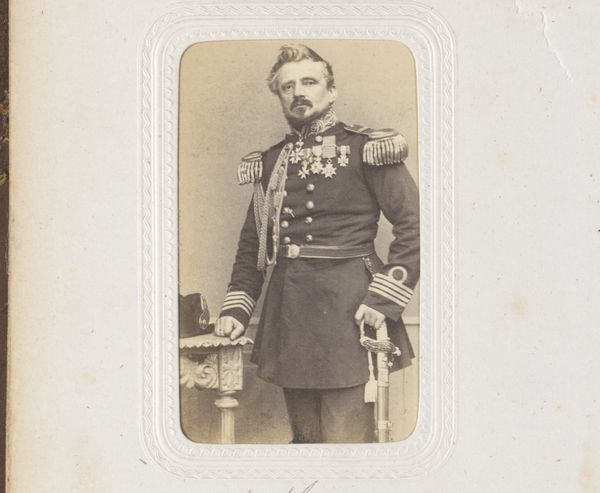
painting, oil-paint
#
portrait
#
character portrait
#
painting
#
oil-paint
#
caricature
#
portrait drawing
#
history-painting
#
academic-art
#
portrait art
#
realism
Copyright: Public domain
Curator: Francisco Oller's portrait of George W. Davis, painted in 1900, immediately projects an air of authority. What's your first impression? Editor: Stern. I’m struck by how the uniform, heavy with gold braid, seems to confine him. It feels almost like he's playing a part. Curator: Indeed. And Oller painted this at a time of shifting power dynamics. Puerto Rico, Oller's homeland, was newly under U.S. control after the Spanish-American War. We have to consider Davis’s role in that context. He was a key figure in the U.S. military government. Editor: That opulent uniform, then, it's not just a symbol of rank but of imperial power itself. Note the eagle on the belt buckle and epaulettes. How consciously did Oller imbue those details with meaning? Curator: That's the question, isn’t it? Oller was a keen observer of social issues; race and power are central themes in his work. Is he celebrating or critiquing? Editor: Perhaps both? The slightly weary expression, that almost imperceptible downturn of his mouth, suggests a burdened man, despite the finery. Maybe Oller humanized the figure of power, hinting at the moral weight of colonial administration. Curator: The portrait does invite such readings. Consider too, the tradition of military portraiture, where idealization is common. Oller avoids grand gestures. He presents Davis in a seemingly straightforward manner, but invites us to see more than just a man in uniform. Editor: He challenges the visual vocabulary of power itself. The stark backdrop further concentrates our gaze on the figure, compelling us to analyze what all those decorations represent—and for whom. Curator: It is a provocative work, especially when viewed through the lens of Puerto Rico's complex history with both Spain and the United States. Editor: A fruitful visual contradiction, prompting thoughts on representation, domination, and the long echoes of colonialism. Curator: A good reminder that symbols are rarely neutral.
Comments
No comments
Be the first to comment and join the conversation on the ultimate creative platform.

